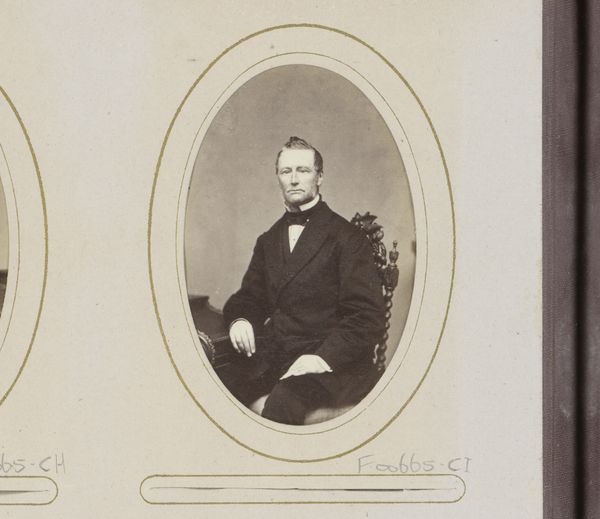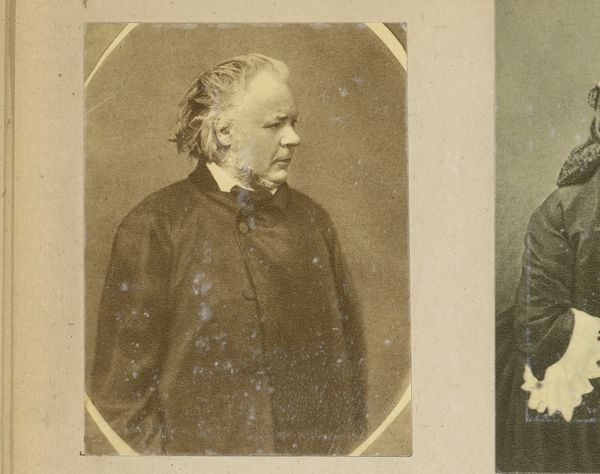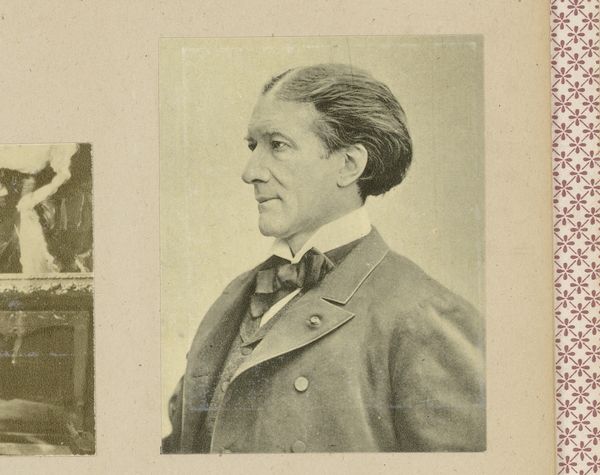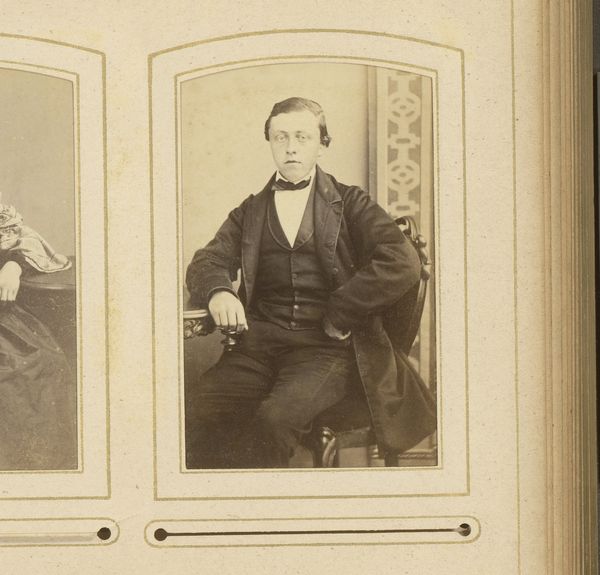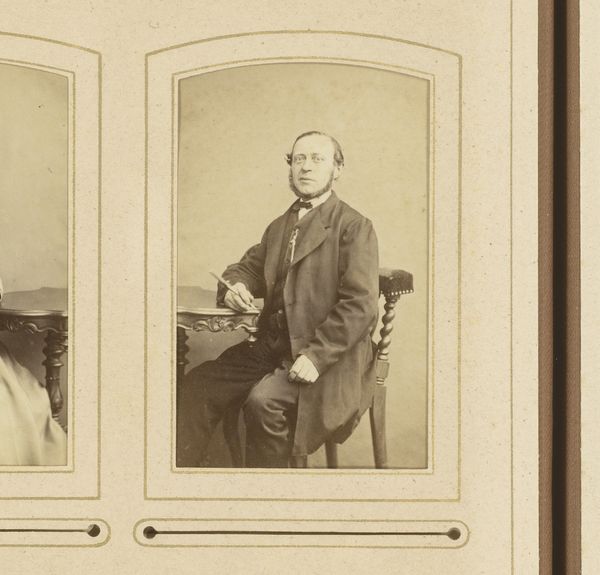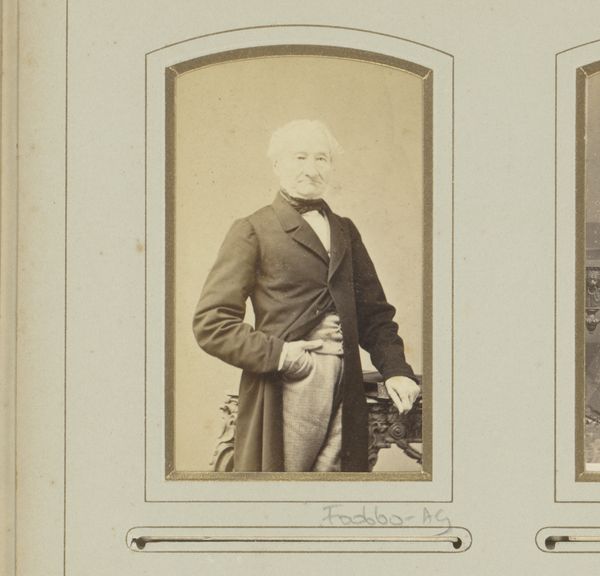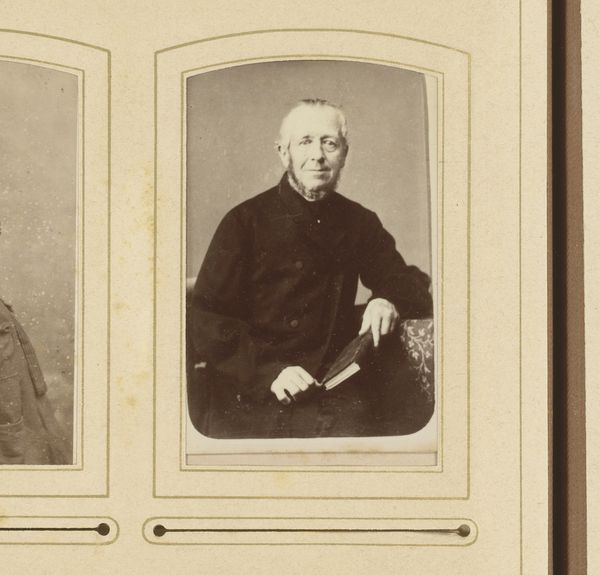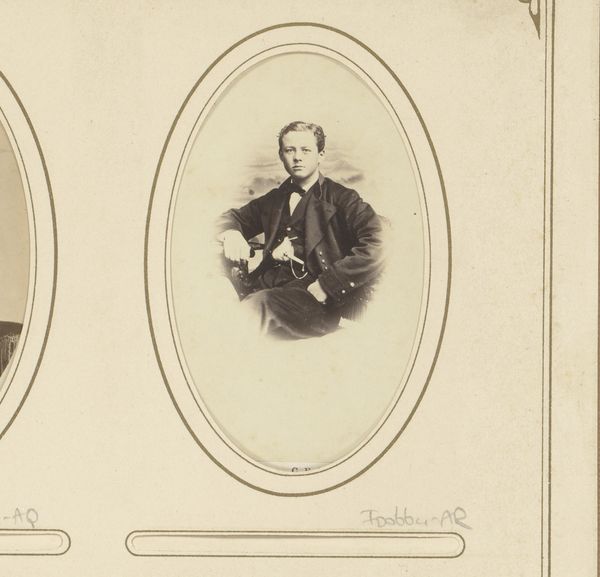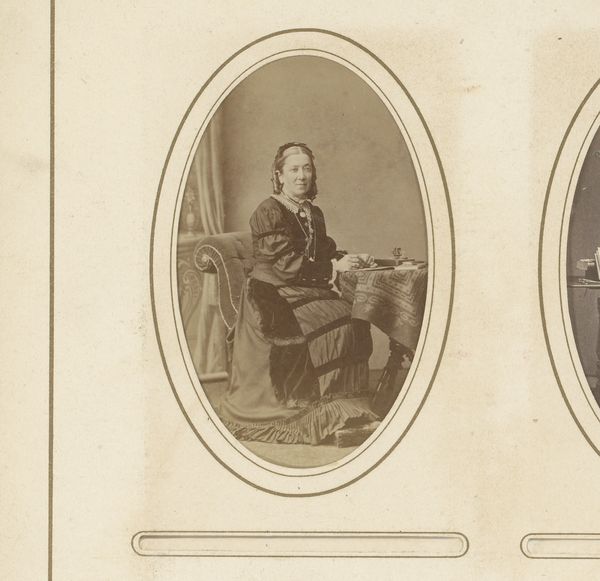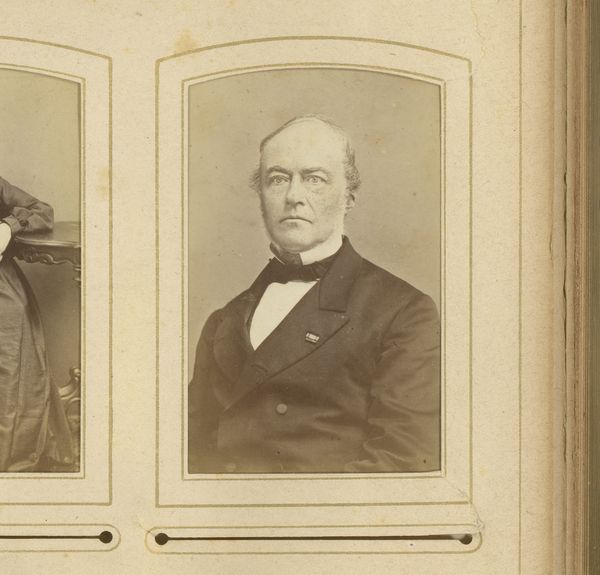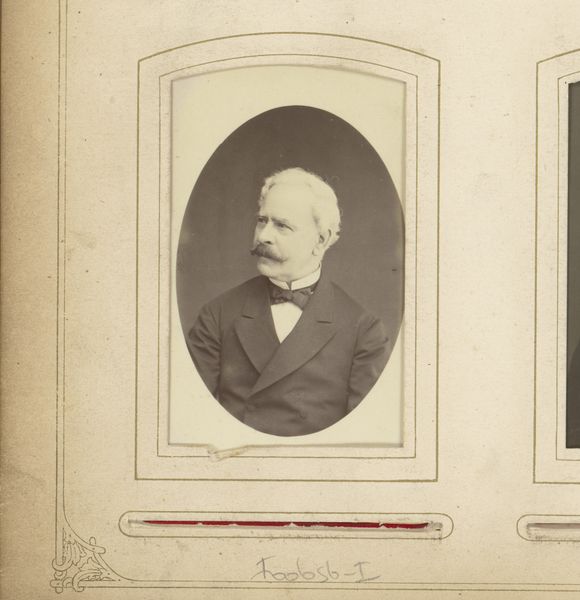
daguerreotype, photography
#
portrait
#
daguerreotype
#
photography
#
romanticism
Dimensions: height 98 mm, width 72 mm
Copyright: Rijks Museum: Open Domain
Editor: This is a daguerreotype from 1841, titled "Portret van Jean-Auguste-Dominique Ingres." The lighting feels quite dramatic. What can you tell me about it? Curator: Considering its materials, we see early photography as deeply intertwined with chemistry and optics, with a focus on the production process of each individual image. How does seeing it as a commodity of its time, one created through industrial progress, shift your view of its artistry? Editor: That's fascinating! I hadn't considered the "commodity" aspect of an artwork of that age so clearly. In what way were early photographic portraits like this related to wider industrial progress? Curator: Well, think about the precise timing and materials required. Silver-plated copper had to be carefully prepared. This points to the specialized labor and resources driving both the chemical and aesthetic result. Also, this Romanticism and realism through emerging techniques begs the question: Who has access to portraiture now? Is this a shift away from painted portraits reserved for the elite? Editor: That makes so much sense! This portrait marks a turning point in artistic production and consumption, bringing portraiture to a wider segment of society, even while tied to specific processes. I see your point on the transformation. Curator: Exactly. It pushes us to question the hierarchies between fine art and what might then be considered a functional or merely documentary method. Hopefully you see how considering the means of production helps us see new connections? Editor: I definitely do. Seeing it as both an artistic and industrial product reveals how deeply art is connected to broader historical changes. Thanks for the different angle!
Comments
No comments
Be the first to comment and join the conversation on the ultimate creative platform.
